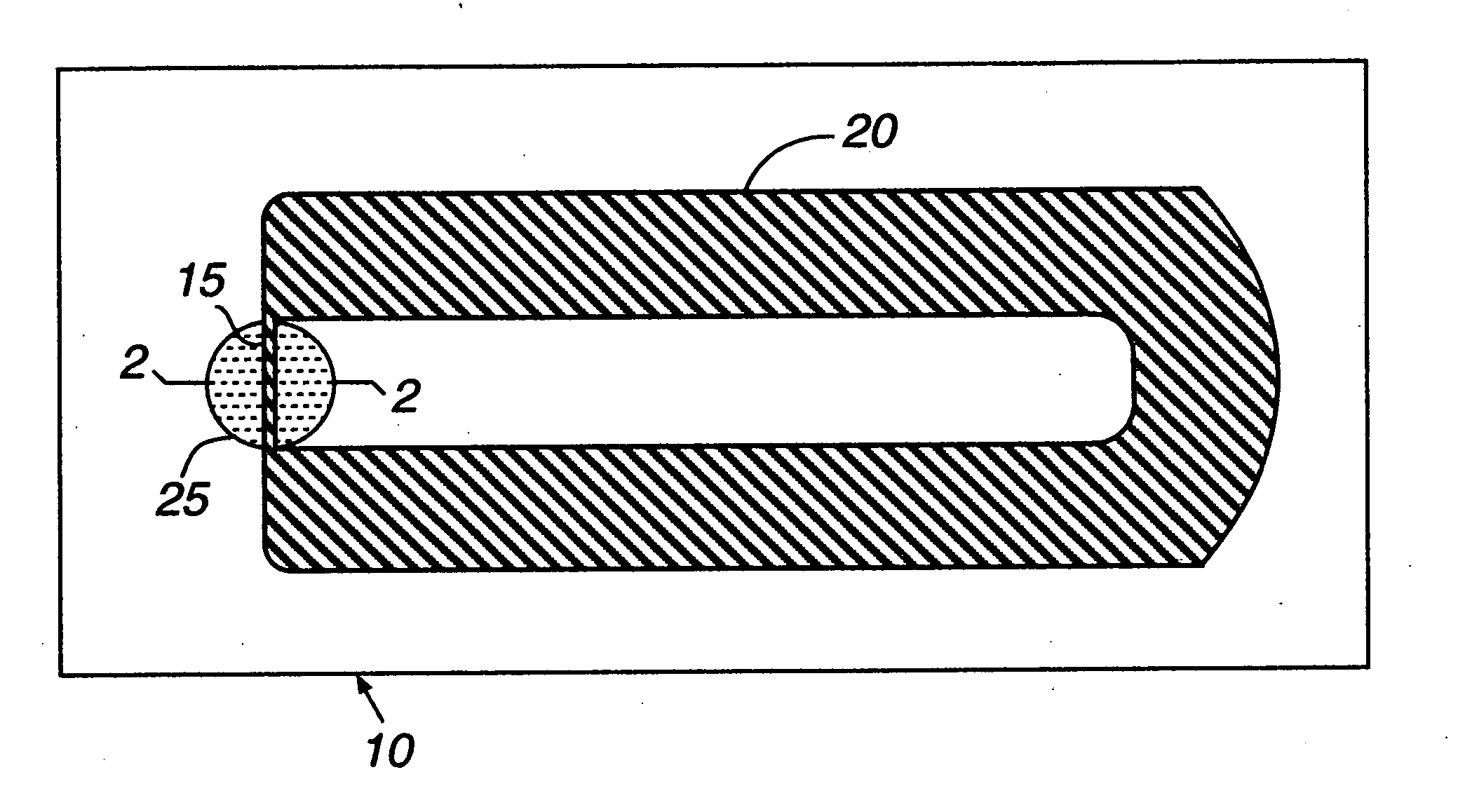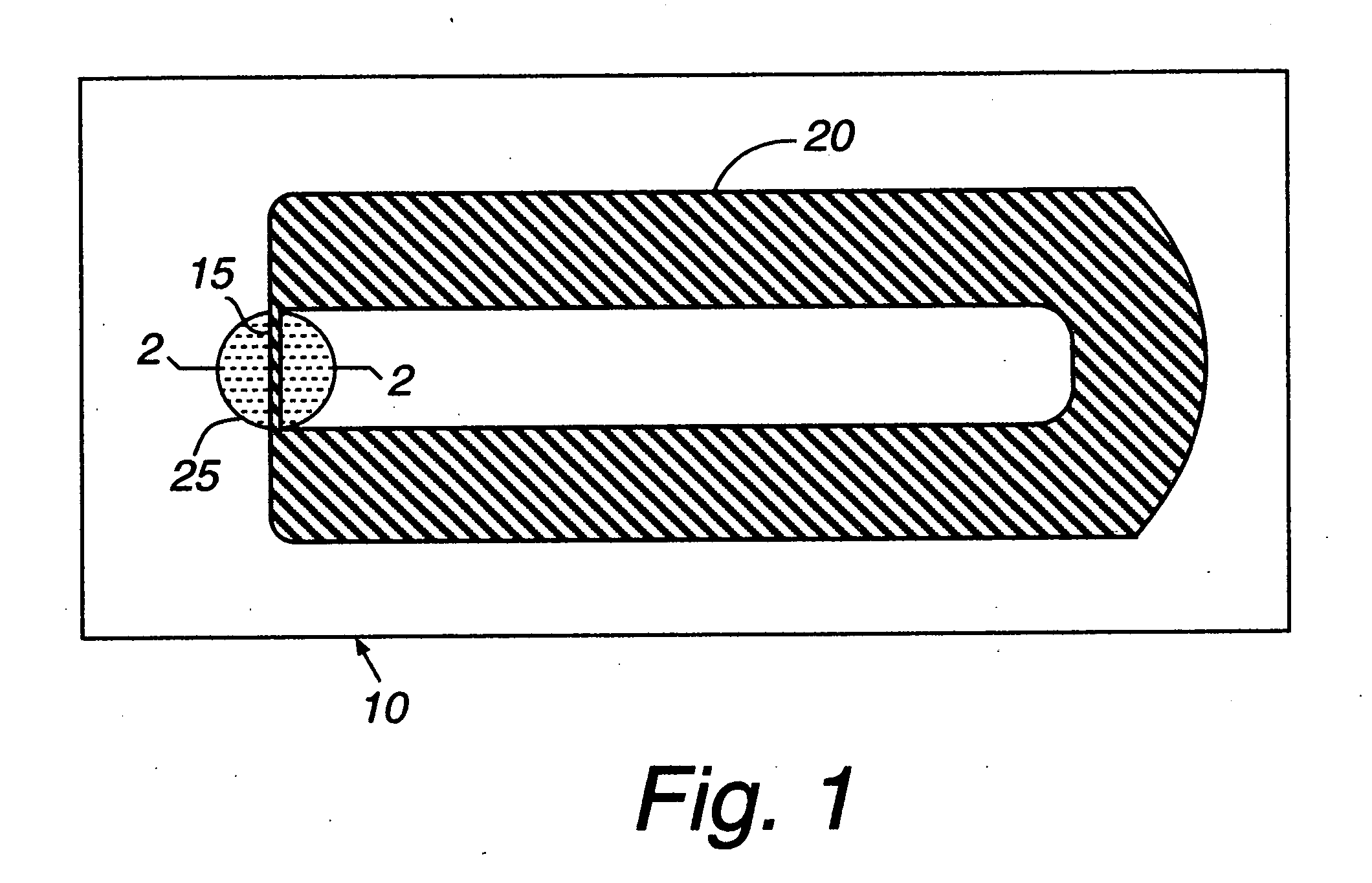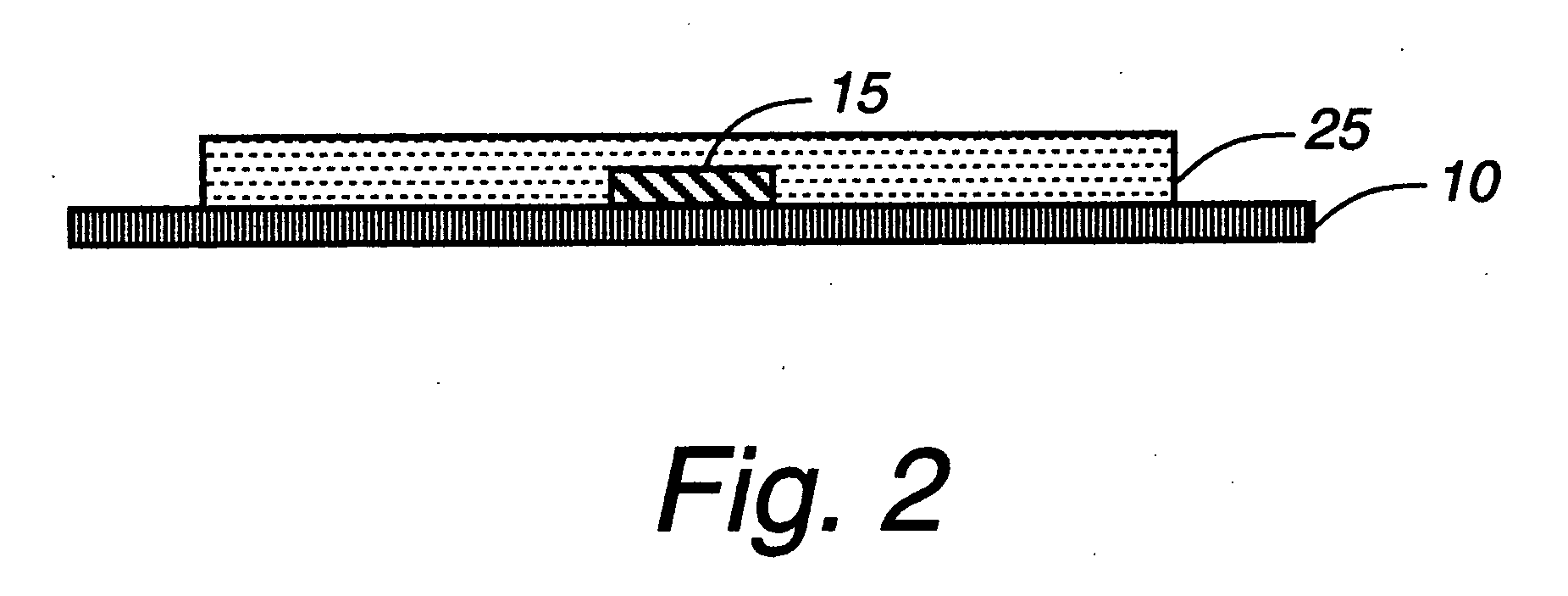Microwave leakage indicator card
a technology of microwaves and indicators, applied in microwave heating, electrical equipment, electric/magnetic/electromagnetic heating, etc., can solve the problems of increased radiation leakage, increased leakage, and all microwave ovens can and do leak radiation, and achieve the effect of greater sensitivity
- Summary
- Abstract
- Description
- Claims
- Application Information
AI Technical Summary
Benefits of technology
Problems solved by technology
Method used
Image
Examples
example 2
[0024] Rather than using a loop antenna, other broad-band antenna embodiments may be used which will enable a single detector to measure leakage from microwave ovens operating at either the 2.45 GHz microwave oven frequency which is authorized for use world-wide, or at the 915 MHz frequency which is authorized for use in North America and South America. There are numerous broad band antenna designs, which could be used for this purpose. Among the most pertinent are the complementary triangular-shaped dipole, plane, and spiral antennas. The complementary triangular-shaped dipole commonly known as the “bow tie” antenna is also known as a Brown-Woodward antenna. It is particularly well suited for this application due to its broad frequency response and simple construction. Referring to FIG. 5, it consists of two triangular-shaped conductive elements 40, 45, which are connected by a narrow resistive element 50. Like the preferred embodiment, these triangular antenna elements and the res...
PUM
 Login to View More
Login to View More Abstract
Description
Claims
Application Information
 Login to View More
Login to View More - R&D
- Intellectual Property
- Life Sciences
- Materials
- Tech Scout
- Unparalleled Data Quality
- Higher Quality Content
- 60% Fewer Hallucinations
Browse by: Latest US Patents, China's latest patents, Technical Efficacy Thesaurus, Application Domain, Technology Topic, Popular Technical Reports.
© 2025 PatSnap. All rights reserved.Legal|Privacy policy|Modern Slavery Act Transparency Statement|Sitemap|About US| Contact US: help@patsnap.com



